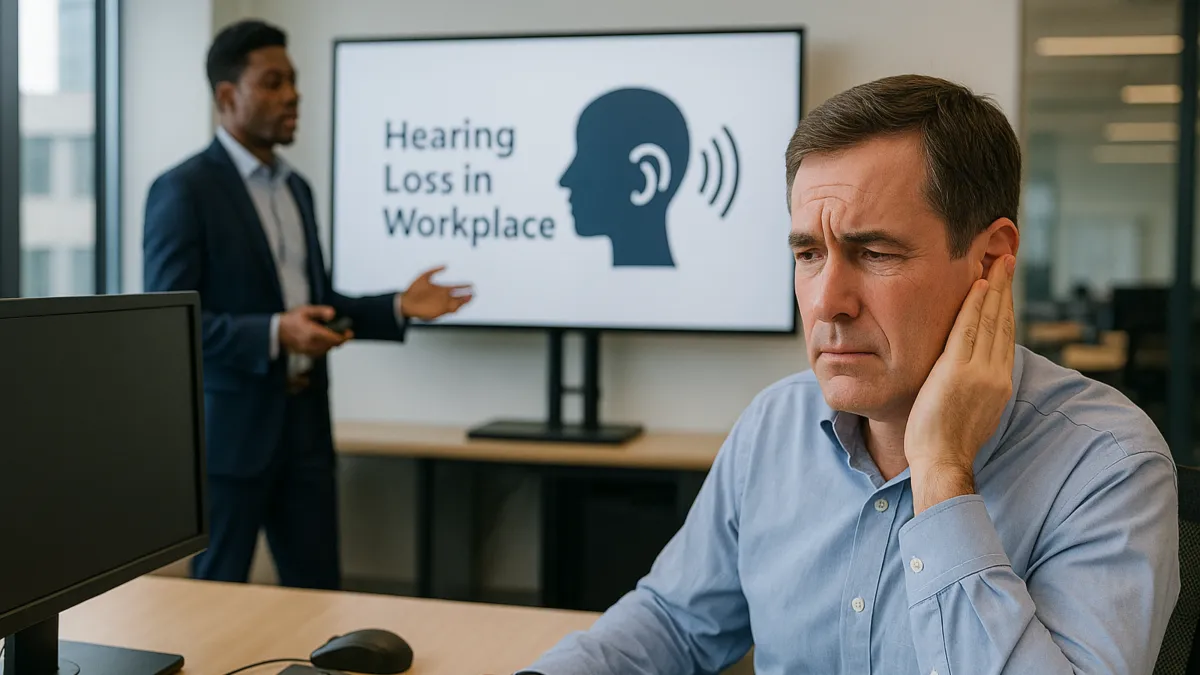
Hearing Loss in the Workplace: Why It Matters & What Your Benefits Should Cover
Noise is part of almost every job. Some workers deal with machinery and power tools, while others face the constant hum of office chatter or background systems. Over time, this noise wears down one of the body’s most delicate systems: hearing. In the United States, hearing loss is among the most common work-related conditions, yet it rarely receives the same attention as eye or back safety. What begins as small misunderstandings during meetings or missed instructions on-site can slowly become permanent hearing damage.
When hearing fades, communication becomes strained and safety risks increase. Misheard directions or delayed reactions can lead to mistakes that affect entire teams. Workers often feel frustrated or isolated when they can’t follow conversations easily, and that isolation can lead to lower morale and reduced productivity. Protecting hearing health supports both the individual and the organization.
Hearing loss is widespread and often unnoticed
According to the Centers for Disease Control and Prevention, around 22 million U.S. workers are exposed to hazardous noise on the job each year, which represents about 14 percent of the workforce. Roughly 12 percent of all workers already have measurable hearing difficulty. (Source: Centers for Disease Control and Prevention)
A long-term study published in PLOS ONE found that employees in high-noise environments had a 35.5 percent chance of developing hearing loss within ten years, compared with 29.1 percent for those in quieter workplaces. (Source: PLOS ONE) Gradual noise exposure, even at moderate levels, contributes to this decline over time.
Globally, more than 430 million people experience disabling hearing loss. The World Health Organization also projects that by 2050, at least 700 million people will require rehabilitation services related to hearing loss. (Source: World Health Organization) These figures highlight how widespread and growing this issue is, particularly in aging populations and industrialized environments.
Prevention and early screening make the biggest difference
Most hearing loss from noise cannot be reversed, so prevention must come first. OSHA requires employers to maintain hearing conservation programs when sound levels reach an average of 85 decibels over an eight-hour shift. (Source: Occupational Safety and Health Administration) Meeting this standard helps, but consistent screening and awareness create stronger results.
Routine hearing tests help detect early warning signs before they interfere with performance or safety. Workers who understand their results tend to use ear protection correctly and take noise exposure more seriously. Simple practices, such as rotating tasks to limit time in noisy areas and maintaining machinery to reduce volume, can significantly lower risk.
Training programs also matter. When employees understand how sound levels affect long-term health, they make better daily choices about protection. Employers who normalize regular screenings and provide easy access to them build trust and improve compliance across the team.
Benefits that protect hearing and productivity
Comprehensive employee benefits should treat hearing care as part of total wellness. Plans that include hearing screenings at no additional cost make it easier for employees to stay proactive. Once hearing loss is diagnosed, coverage for hearing aids, assistive devices, and follow-up visits helps employees stay productive and connected. (Source: National Institute on Deafness and Other Communication Disorders)
Workplace adjustments support these benefits. Reducing background noise, improving room acoustics, and using visual cues during meetings create an inclusive environment where employees with hearing challenges can fully participate. Employers who invest in these changes protect not only hearing but also team performance.
Education remains essential. Teaching employees how to identify early hearing fatigue and when to request testing ensures problems are caught early. Combining coverage, workplace support, and education creates a long-term culture of awareness.
Protecting hearing protects performance
Healthy hearing keeps workplaces efficient, safe, and connected. When employees can focus without strain, communication becomes clearer and collaboration improves. Companies that include hearing care in their benefits plans show a commitment to long-term well-being and to the success of their workforce.
To build a benefits plan that supports every part of employee well-being, visit 125 Managed Health. Discover how smarter, preventive benefits help protect hearing, strengthen productivity, and keep your workforce performing at its best.
Start your journey with 125 Managed Health today.
For more stories or updates, visit the 125 Managed Health Blog Hub.